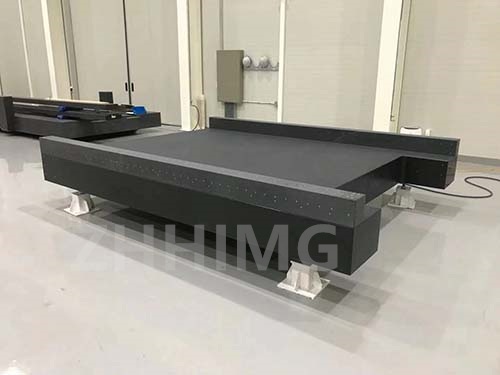A bridge coordinate measuring machine (CMM) is an important investment for any manufacturing industry as it helps ensure that the products being produced meet the required specifications and standards. When choosing a bridge CMM, various factors need to be taken into consideration, and one of the most critical factors is the type of bed material to be used. A granite bed is a popular choice for most bridge CMMs, and this article will discuss why granite beds are important in the selection process.
Granite is a type of igneous rock that is formed from the slow crystallization of magma beneath the Earth's surface. This rock is known for its durability, hardness, and resistance to wear and tear, making it an ideal material for the construction of CMM beds. Granite has excellent dimensional stability, which means that it can maintain its shape and size even when subjected to temperature and humidity changes. Additionally, granite has a low coefficient of thermal expansion, which makes it an excellent material to minimize thermal growth during measurement.
Another reason why granite beds are popular in bridge CMMs is because of their high damping capacity. Damping refers to a material's ability to absorb vibrations and reduce noise. The high damping capacity of granite helps reduce the vibration and noise generated during measurement, thereby improving measurement accuracy and repeatability. Additionally, granite has low electrical conductivity, which helps reduce the risk of electrical interference during measuring, increasing the machine's measurement integrity.
The granite used in the construction of bridge CMMs is usually of high quality, which helps improve the accuracy and longevity of the system. This is because the granite is quarried, polished, and finished to specific standards to ensure that it has a flat and uniform surface. The flatness of the granite bed is a crucial factor because it provides a stable reference surface on which the probe moves during measurement. Additionally, the uniformity of the granite bed ensures that there is minimal deformation or distortion in the measuring area, leading to accurate and repeatable measurements.
In summary, choosing a bridge CMM with a granite bed is an essential consideration due to the numerous benefits it offers. The granite bed offers superior dimensional stability, low coefficient of thermal expansion, high damping capacity, low electrical conductivity, and high-quality surface finish. All these factors contribute to the accuracy, repeatability, and longevity of the system. Therefore, when selecting a bridge CMM, ensure that the granite bed meets the required standards and specifications to achieve optimal measurement results.
Post time: Apr-17-2024

